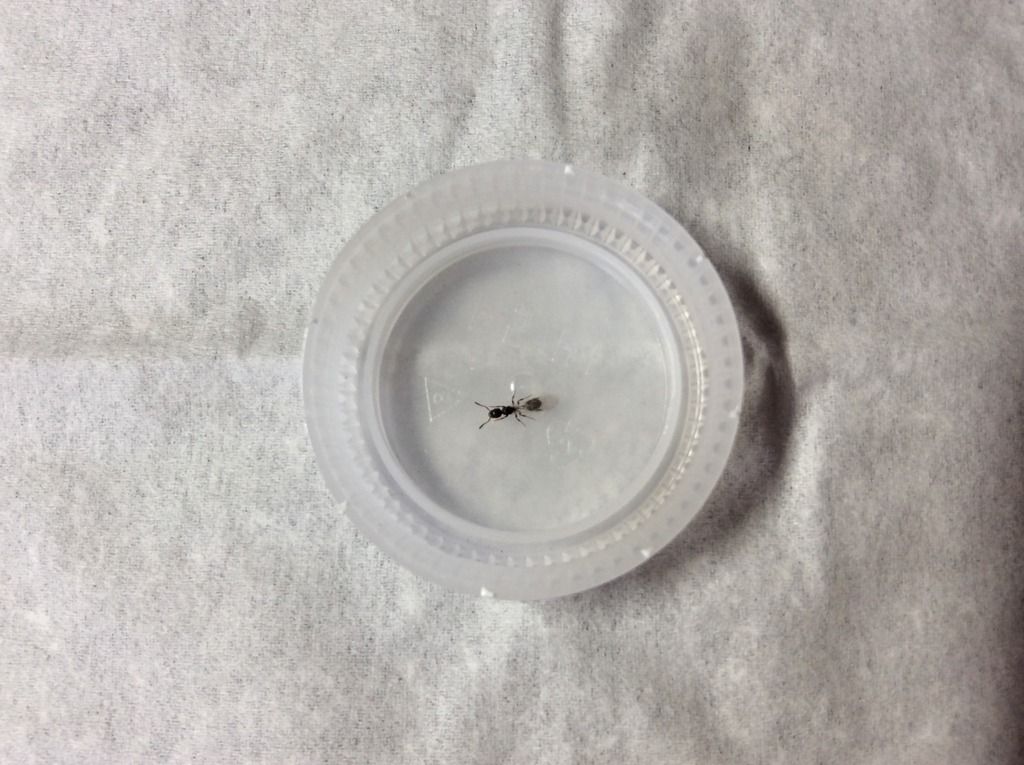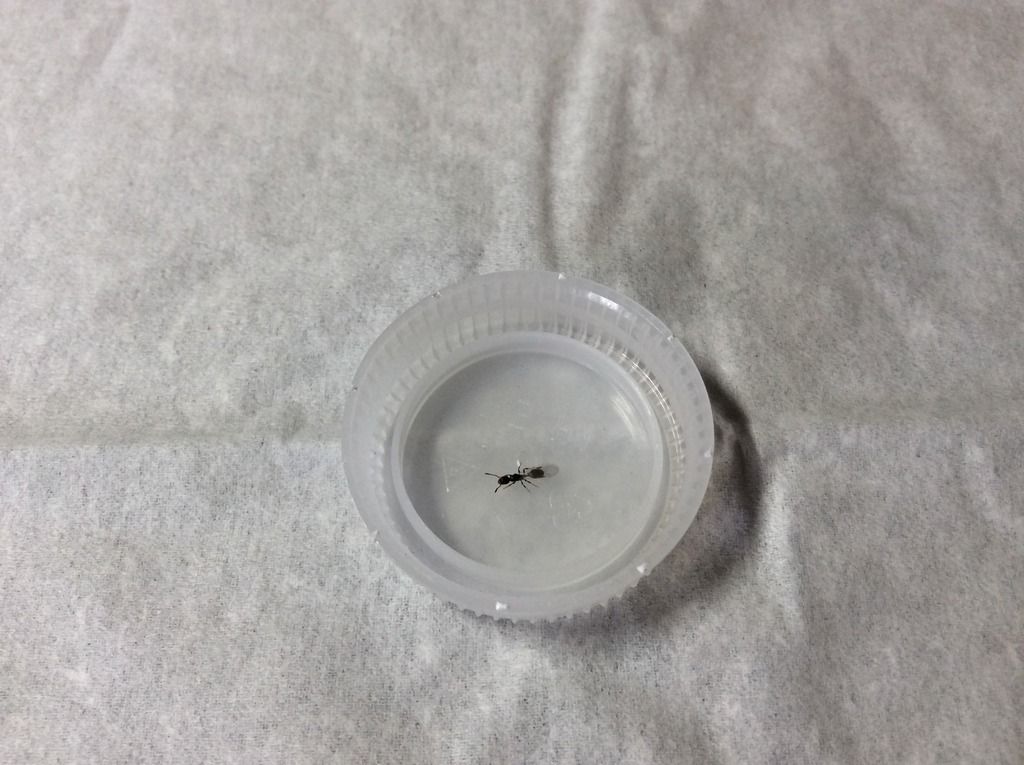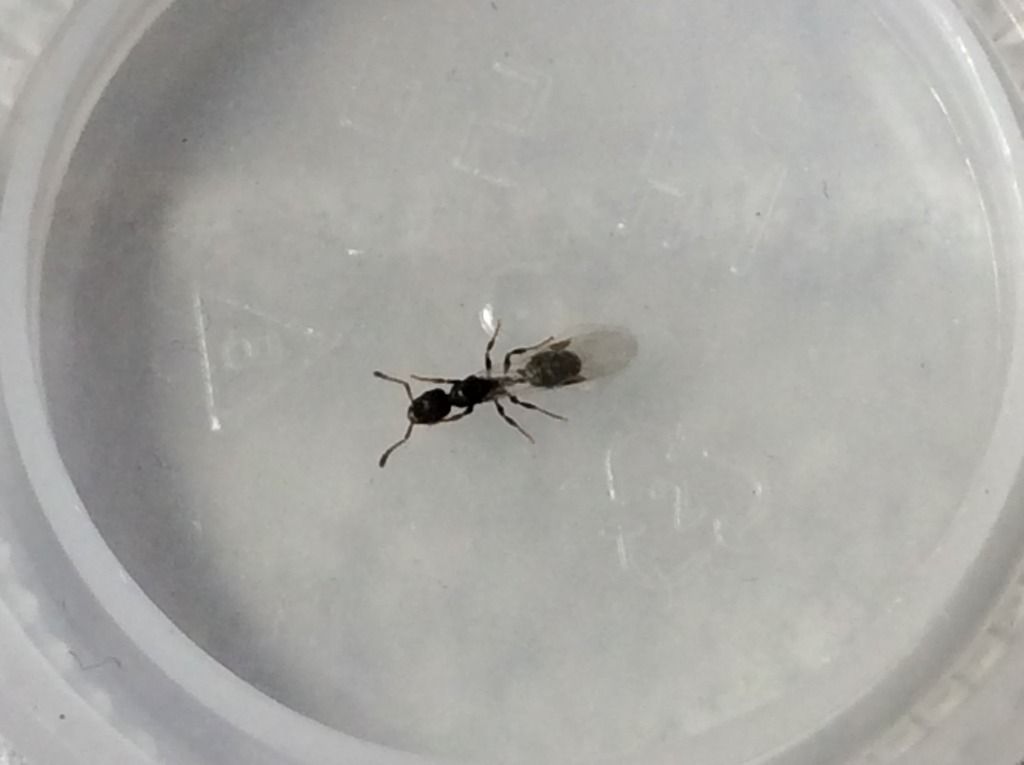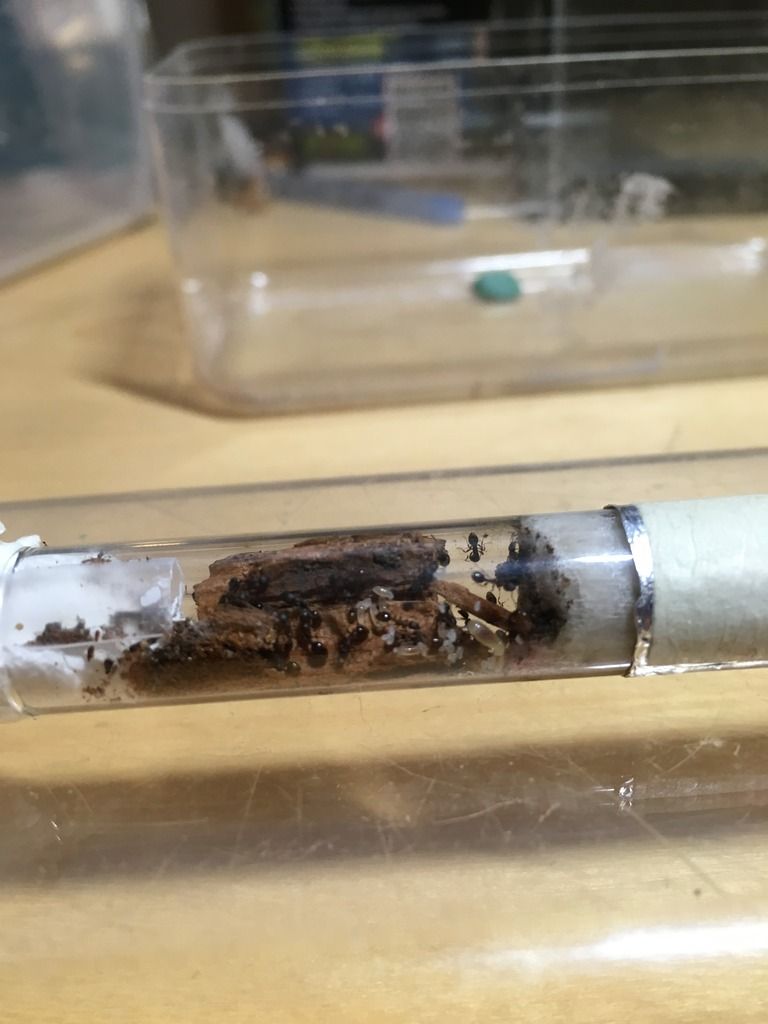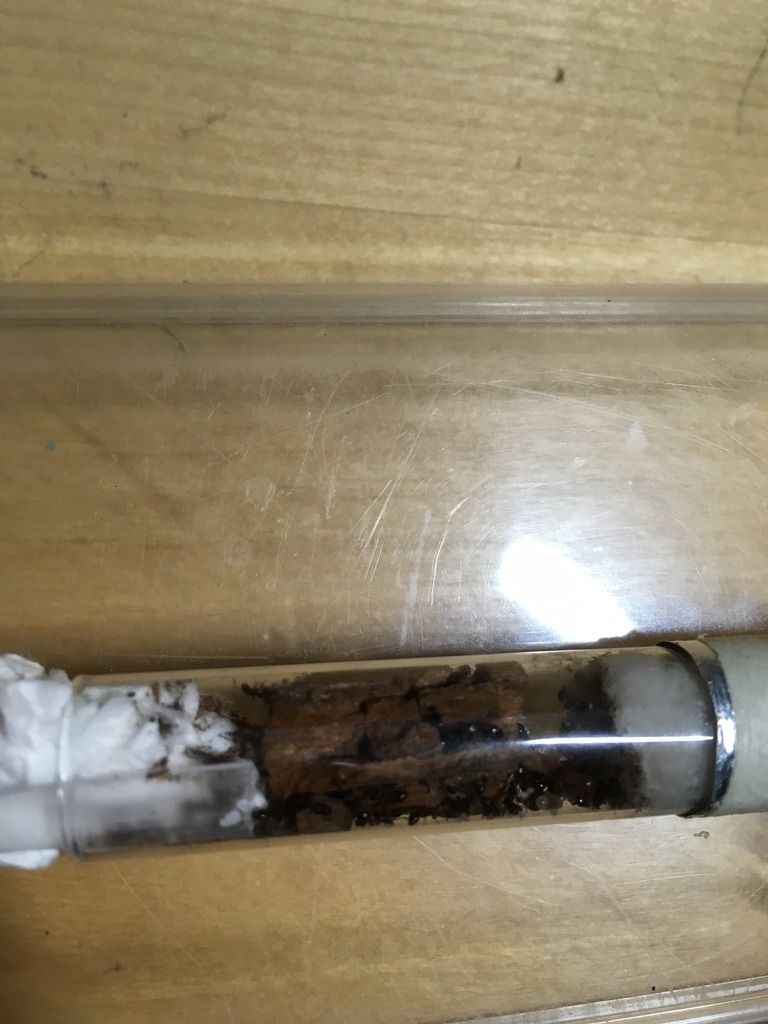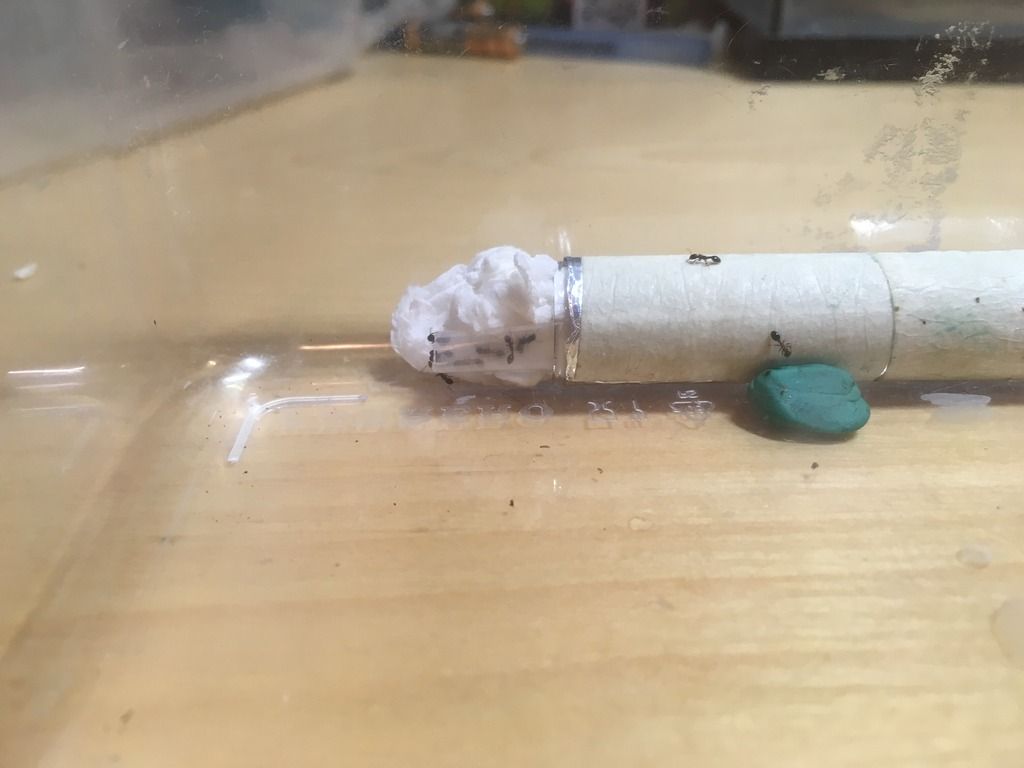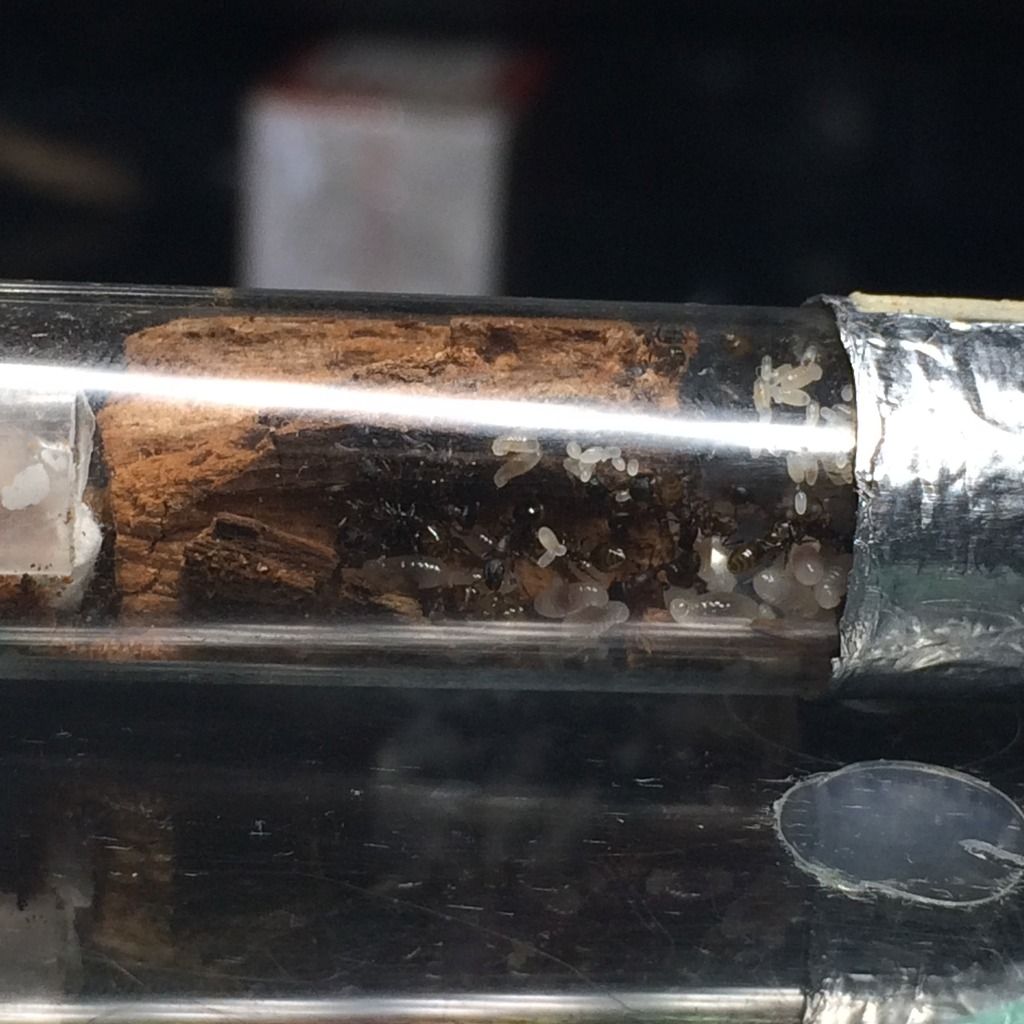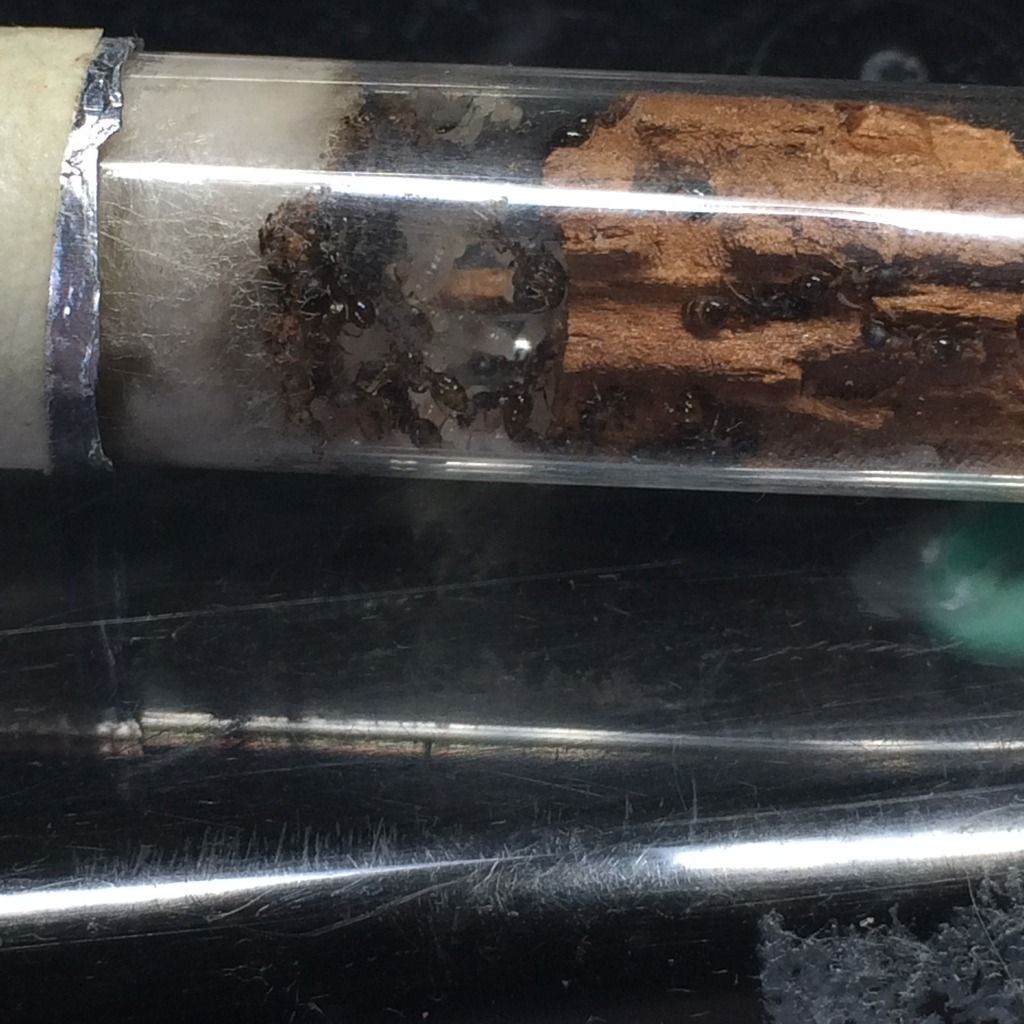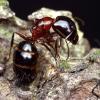Caught this colony on 14 May from a log that used to be part of a garden bed. A bunch of these logs were being moved and they were not going anywhere friendly in particular so I decided to break one open with a shovel. ![]()
In all fairness though I had prior knowledge that a Lepto colony resided in one of these logs. There seems to be a lot of Leptothorax around all of a sudden.
They're settled down for now and seem to keep their brood in one spot. The queens usually reside somewhere at the back.
I think one of the pictures shows one queen in it. I can't tell ![]()
There's no clear picture of the queen unfortunately because the idea of taking a picture of a queen is quite unthinkable and is totally illogical to do. ![]()
Ok so kind of a bit of rambling here but does anyone know anything about Leptothorax, they don't seem very popular. I personally find them quite interesting is there any special requirements or general rule of thumbs for them? behavior wise they're very timid, they never seem to fight any ants and just tuck their appendages in when threatened, they can be insanely fast when they want to. I've noticed their nests mainly consists of a few small chambers and lots of tunnels their flat bodies seem quite fit for the narrow crevices they nest in. The queens seem to be different sizes too which is quite interesting as well.
Edited by LC3, February 19 2018 - 5:52 PM.





